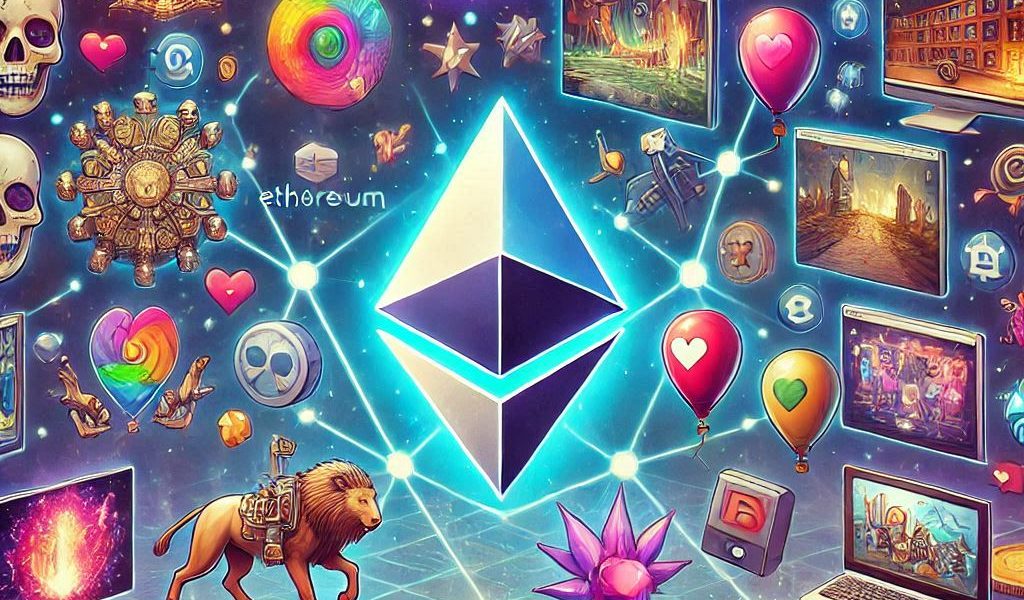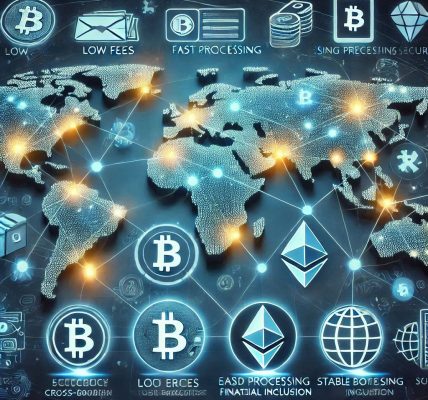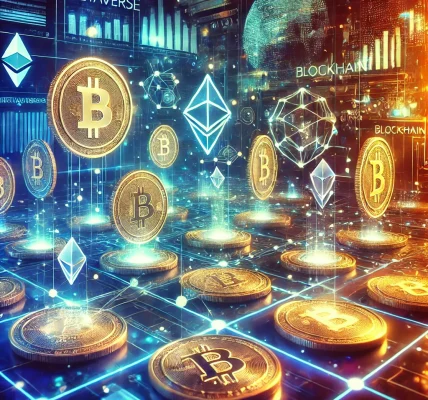Cryptocurrency has revolutionized the financial world, but a new innovation is taking the digital asset space by storm: Non-Fungible Tokens (NFTs). While Bitcoin and Ethereum are the most well-known cryptocurrencies, NFTs are quickly gaining attention due to their unique qualities and widespread use in digital art, gaming, and collectibles.
In this blog, we will explore what NFTs are, how they function, their role in the cryptocurrency market, and why they are becoming such a significant part of the digital economy.
What Are NFTs?
NFTs, or Non-Fungible Tokens, are a type of cryptocurrency token that represents ownership of a unique item, asset, or piece of content on the blockchain. Unlike fungible tokens like Bitcoin or Ethereum, which are interchangeable with each other (one Bitcoin is always equal to another Bitcoin), NFTs are unique and cannot be exchanged on a one-to-one basis. Each NFT has distinct information and attributes that make it different from any other token.
NFTs can represent anything digital, including:
- Digital Art: Digital paintings, graphics, animations, etc.
- Music and Videos: Songs, albums, video clips, etc.
- Virtual Goods in Video Games: Skins, characters, or in-game assets.
- Collectibles: Digital collectibles like sports cards, limited-edition items, etc.
- Real Estate in Virtual Worlds: Properties within virtual metaverses like Decentraland or The Sandbox.
Each NFT is stored on a blockchain (most commonly Ethereum), where its ownership and transaction history are securely recorded. This makes NFTs a highly secure way to prove ownership of a digital asset.
How Do NFTs Work?
NFTs work through the same blockchain technology that powers cryptocurrencies. However, while cryptocurrencies like Bitcoin or Ethereum are fungible (one token is identical to another), NFTs are distinct. Here’s how they work:
- Creation: NFTs are created (or “minted”) on a blockchain platform using smart contracts, which are self-executing contracts with the terms of the agreement directly written into code. Ethereum is the most widely used blockchain for minting NFTs, but other blockchains like Binance Smart Chain, Solana, and Tezos also support them.
- Ownership and Transfer: Once minted, the NFT is assigned to a digital wallet. The wallet’s private key ensures that only the owner can transfer or sell the NFT. Transactions involving NFTs are recorded on the blockchain, providing a transparent history of ownership and sales.
- Marketplaces: NFTs are bought and sold on specialized online platforms called NFT marketplaces. Popular platforms include OpenSea, Rarible, SuperRare, and Foundation. These marketplaces allow creators to upload their digital work, and buyers can browse, purchase, and trade NFTs.
- Smart Contracts: Smart contracts embedded in NFTs can also enable creators to receive a percentage of royalties every time their NFT is resold. This ensures that creators continue to benefit from their work, even after the initial sale.
The Role of NFTs in the Cryptocurrency Market
NFTs have become a prominent part of the cryptocurrency market, and their role continues to evolve. Here’s how they’re influencing the market:
1. Expanding Cryptocurrency Use Cases
Cryptocurrencies like Bitcoin and Ethereum are primarily used for digital currency transactions. However, NFTs broaden the scope of blockchain technology by introducing use cases beyond currency. NFTs bring blockchain into the realms of art, entertainment, gaming, and even real estate, adding new dimensions to the cryptocurrency market.
For instance, Ethereum’s blockchain was primarily designed for financial transactions but has since expanded to support decentralized finance (DeFi) applications and NFT platforms. This flexibility helps drive demand for cryptocurrencies like Ethereum, further integrating NFTs into the broader crypto ecosystem.
2. Increasing Demand for Cryptocurrencies
NFTs are driving the demand for the underlying cryptocurrencies used to buy and sell them. Ethereum (ETH) is the most commonly used cryptocurrency for purchasing NFTs, and as NFT popularity grows, so does the demand for ETH. This has had a notable impact on Ethereum’s market price, driving the cryptocurrency’s value upward.
Additionally, as new blockchains like Solana and Binance Smart Chain gain traction in the NFT space, they help diversify the market, bringing more liquidity and investment to the cryptocurrency sector.
3. New Investment Opportunities
NFTs provide new investment opportunities within the cryptocurrency market. For investors looking to diversify their portfolios, NFTs represent a digital asset class that holds value through scarcity and uniqueness. Investors can purchase rare digital assets or collectibles, expecting their value to rise over time. Some high-profile NFT sales have seen massive returns, creating a new form of digital wealth for savvy investors.
For example, NFTs like CryptoPunks and Bored Ape Yacht Club have become popular as collectible assets, and their prices have skyrocketed. These rare digital assets have created new avenues for investors to profit, alongside traditional cryptocurrencies.
4. Revolutionizing Digital Art and Content Creation
NFTs are revolutionizing the world of digital art by providing artists with a direct way to sell and monetize their work. Traditionally, digital art could be easily copied and shared, making it difficult for creators to profit from their work. NFTs solve this problem by allowing creators to sell verifiable ownership rights to their digital creations.
NFTs also give artists more control over their work, with smart contracts ensuring that they receive royalties from future sales of their NFTs. This innovative model has empowered artists and creators, enabling them to earn a sustainable income from their digital content.
5. Changing the Gaming Industry
The gaming industry has embraced NFTs as a way to create in-game assets that can be bought, sold, and traded on blockchain networks. Players can now own unique digital items such as skins, weapons, or characters as NFTs, which can be sold to other players. This creates a decentralized economy within the gaming world, where players can truly own and profit from their virtual assets.
Games like Axie Infinity have created entire ecosystems built around NFTs, where players earn and trade tokens while participating in the game’s economy. The popularity of such games has spurred the growth of NFTs in gaming, attracting more players and investors to the cryptocurrency market.
Why Are NFTs So Popular?
NFTs have gained immense popularity in recent years, driven by several factors:
- Scarcity and Uniqueness: NFTs are unique, making them valuable due to their scarcity. Collectors are willing to pay a premium for rare digital assets.
- Cultural and Trend Appeal: NFTs have become a cultural phenomenon, especially in the art world and entertainment. Celebrities, musicians, and athletes have also jumped on the NFT bandwagon, boosting their popularity.
- Potential for Profit: As with traditional art and collectibles, NFTs offer the potential for financial gain through resales. Many early buyers of NFTs have seen huge returns on their investments, fueling further interest.
Challenges and Concerns of NFTs
While NFTs have brought about a significant shift in the cryptocurrency market, there are some challenges and concerns:
- Environmental Impact: The process of minting and trading NFTs consumes a large amount of energy, particularly on blockchains like Ethereum. This has raised concerns about the environmental impact of NFTs and blockchain technology in general.
- Market Speculation: The NFT market is highly speculative, and prices can fluctuate drastically. This volatility can make it difficult for investors to predict long-term value.
- Intellectual Property Issues: NFTs are sometimes sold without clear ownership of the intellectual property rights associated with the digital asset. This can lead to legal disputes and confusion over the true value of an NFT.
Conclusion
NFTs have become an integral part of the cryptocurrency market, providing a new way to own and trade unique digital assets. They have expanded the use of blockchain technology beyond just financial transactions, offering new opportunities for artists, gamers, investors, and collectors.




